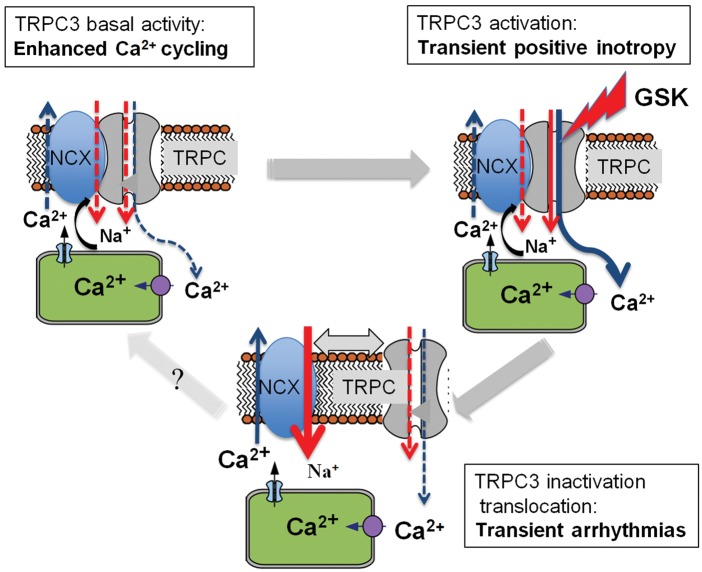Figure 7.
Hypothetical model of dynamic, functional interaction between TRPC3 and NCX1. TRPC3-mediated inotropy (upper left) requires close spatial proximity to NCX1. Cytoplasmic Ca2+ concentration is elevated by (i) suppressed intracellular Ca2+ clearance through NCX1 and (ii) by the TRPC3 Ca2+conductance itself. NCX forward-mode Ca2+ extrusion is limited to negative potentials, leading to enhanced Ca2+ loading of the SR. Excessive activation of TRPC3 results in transient Ca2+ overload followed by both channel inactivation and rapid spatial uncoupling from NCX1. While SR loading slowly declines, rapid drop in local cytoplasmic Na+ at the exchanger is expected to transiently favour arrhythmogenesis by facilitation of NCX forward mode (upper right).

